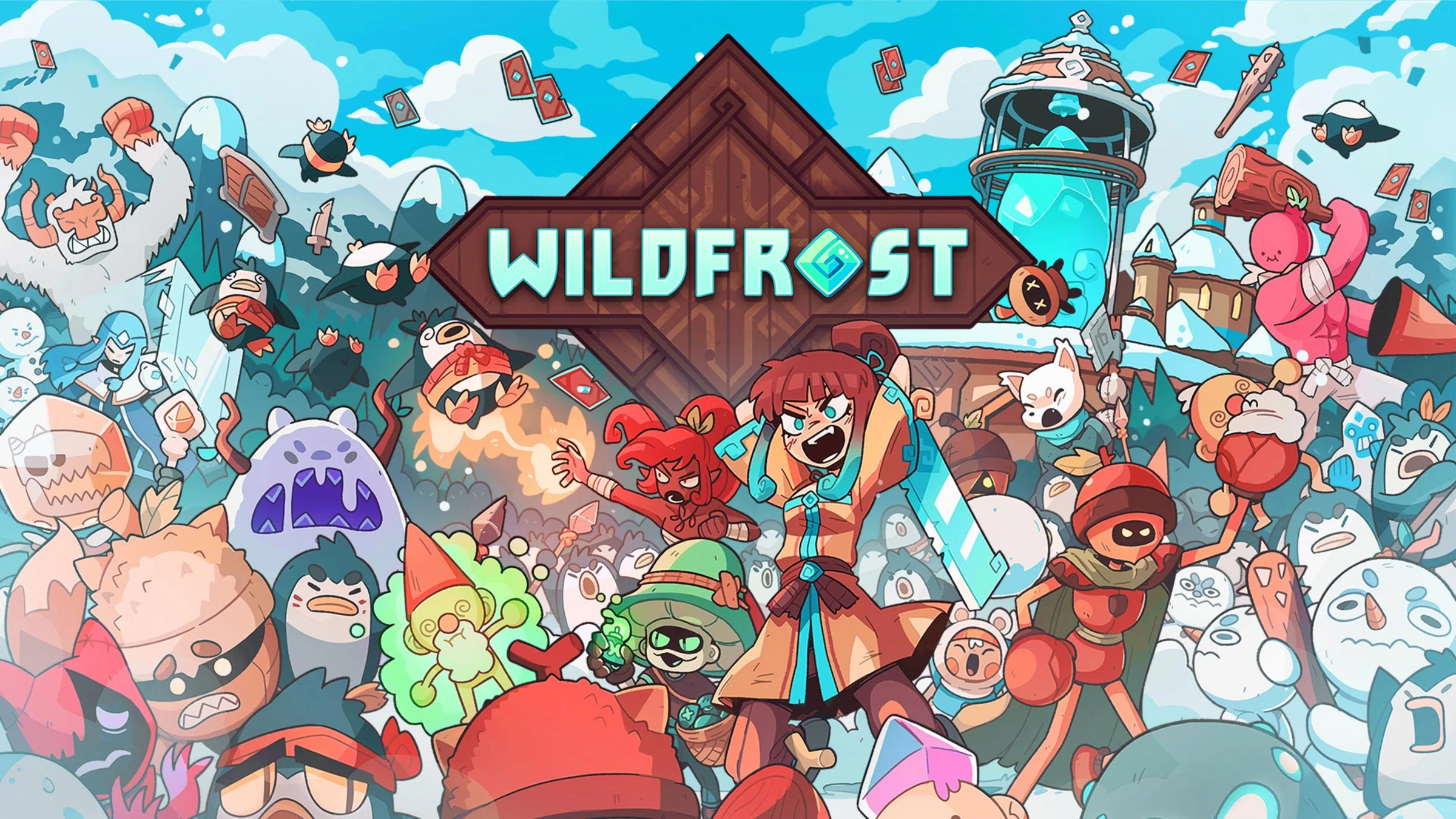Wildfrost's Sound Designer Sheds Light on its Frosty Soundscape
This tactical deck-builder doesn't put the action on ice


Roguelike deck-builder Wildfrost pairs the genre's "one more round" mantra with a cutesy ice aesthetic. Cleverly designed items and charming heroes lend Wildfrost a sense of place among its roguelike brethren. Think chillies for bonus damage, snowballs for stuns, and shrooms for poison.
A unique battle system where cards attack after a set number of turns demands the player to hone their forecasting abilities. Inflicting special effects on foes before using your heroes to inflict bonus damage is a treat for the soul. Each effect, from attacks to cards prancing away after a fight, has sounds grounded in its frosty world. I got to talk with Felix Barbarino, the sound designer behind Wildfrost's incredible range of sounds.
He cited a variety of hobbies that inspired and informed the decisions behind Wildfrost's riveting sound design. "A secret hobby of mine is voice imitation and the performance of especially stupid voices. This becomes super handy for sound design in video games, where you often need several variations of the same voice to let the creature express itself in as many ways as possible. Of course, I couldn't resist giving my voice to one or the other creature in Wildfrost this way."
To my surprise, Felix then brought up traditional card games. "I had hardly any experience with card video games before Wildfrost but I felt a certain attraction towards the genre. Perhaps it was because I used to collect Pokemon or play a lot of card games with the family. So it was important to me that this part of Wildfrost felt really organic."
"To achieve that, I looked for good-sounding cards at home, took them to the studio, and 'performed' and recorded all the card movements in front of a microphone. So something like shuffling cards, drawing cards, stacking cards, letting cards fall on top of each other, and so on. This resulted in a very long recording session, from which I was taking snippets over and over again to design certain sounds for Wildfrost." His efforts did pay off, with Wildfrost sounding every bit as polished as more established rival deck-builders.

Felix was quick to note the nuances of his work that most players might not notice. "One thing that most people probably don't notice, but which is extremely important, is that the sounds should all match the key of the soundtrack," says Felix. "For example, the swipe sound and the 'shhhiiiing' from the 'I take a card and aim it at an enemy' action. That one shouldn't be a semitone lower than the music playing in the background."
"That would sound quite distracting because you do this action very often. If you keep this in mind for as many sounds in the game as possible and also check back with the composer, this will significantly enhance the entire audio quality of the game."
Felix worked closely with the team at Deadpan Games to account for Wildfrost's potentially endless nature. It's no surprise that he factored the ice theme heavily into its sound palette. "The ice theme has been a great inspiration for the sound design from the beginning," he tells me.
"A good example is the snowstorm animation used for the loading time between screens. Normally you would probably not use any sound at all for loading times or just a simple whoosh. But in Wildfrost, the developers Will and Gaz had this blizzard built in, so I created an appropriate 'snow whoosh' for that as well."
Working in tandem with the team helped Wildfrost's sounds stay cohesive in a game where a lot is going on at any given time. Felix wanted to make each move feel momentous and make each win feel rewarding. "I also added an icy 'glitter' layer to some rewarding sounds. This gives them that special feeling, reminiscent of the glitter in the snow when the sun is shining. Adding this to tasks like opening chests, smashing ice blocks to free companions, etc. was really helpful to make them feel extra rewarding and sparkly."
Designing sounds for a game based around cutesy yet potent attacks and fantasy-based abilities was no simple feat. The devs faced several challenges from a sound design standpoint. "I definitely wanted the battle to feel good and responsive. That's why the corresponding sounds, such as hits or special abilities, are designed to be particularly powerful and crisp."

Felix was quick to note the contrast between how sounds were designed around the reaction he wanted to elicit from the player. "Clicking on the map to begin a battle or ringing the redraw bell to draw your next cards should sound big and powerful, almost threatening. The small sounds in between, however, such as the card countdown or the popping up of locations on the map, consist of cute synthesiser bloops."
"The plan was that the fights would sound more serious and stronger, everything in between a bit more relaxed and also cuter and friendlier." The game's tense boss battles were aided by nerve-wracking attack sounds decimating your frontline of cards. Potent cards of your own featured strong sounds too, evening the odds as you refreshed your deck and prayed for a good hand.
"I like sounds that you can breathe a bit of nonsense into," said Felix. "For example, in Wildfrost there are various situations in which cards 'run' from the field. You hear cute tapping feet sounds when they do this. But when the gnome runs off with his money bag on his back, you hear him laughing and the remaining coins in his bag bouncing. And when your own cards run away because you have lost a fight, they sometimes whistle innocently." It's an effect that most players will spot right away, helping Wildfrost cement its "cute but packs a bite" vibe.
"Another example is the so-called charm machine that spits out an upgrade when you insert coins. If you start this machine, it briefly gives a surprised mechanical scream - as if you had woken it up in the middle of the night. That's the kind of detail I like, and Gaz and Will, fortunately, gave me a lot of freedom there."

I asked Felix if ordinary moments required more effort than the iconic ones that players encounter less frequently. "Designing the different special abilities and giving them each their own character was definitely tricky. Keeping a consistency there and making sure that one ability doesn't sound much weaker than another definitely took longer than simple smaller sounds like the bell ringing when you enter the shop or the opening and closing of the backpack inventory."
Felix then played his own devil's advocate. "UI sounds, on the other hand, are a good counter-example. You would probably classify them as ordinary, but you can also invest a lot of time in designing them. I wanted to design a UI that feels 'logical' - a click should sound like a click and a hover like a hover - but at the same time I wanted to give the sounds their own Wildfrost character."
"To achieve that, I ended up using different layers of already finished in-game sounds as source material and processed them in a way that I got a suitable hover and click sound out of them. The hover, for example, is simply a cut-off bling SFX (blings are the coins you collect during your run); the click is a bit more complex and consists of various snippets of ability sounds, but also of instrument samples that Paul gave me. So although these sounds might seem 'ordinary' at first glance, there was often a long thought process and a lot of experimenting involved which made them very difficult again."
We’d like to thank Felix for making time for us. And best wishes to Deadpan Games for their upcoming projects.
Stay tuned to SUPERJUMP! We’ve got a whole slate of awesome interviews planned so make sure to check back regularly and keep watching our social media as well.
